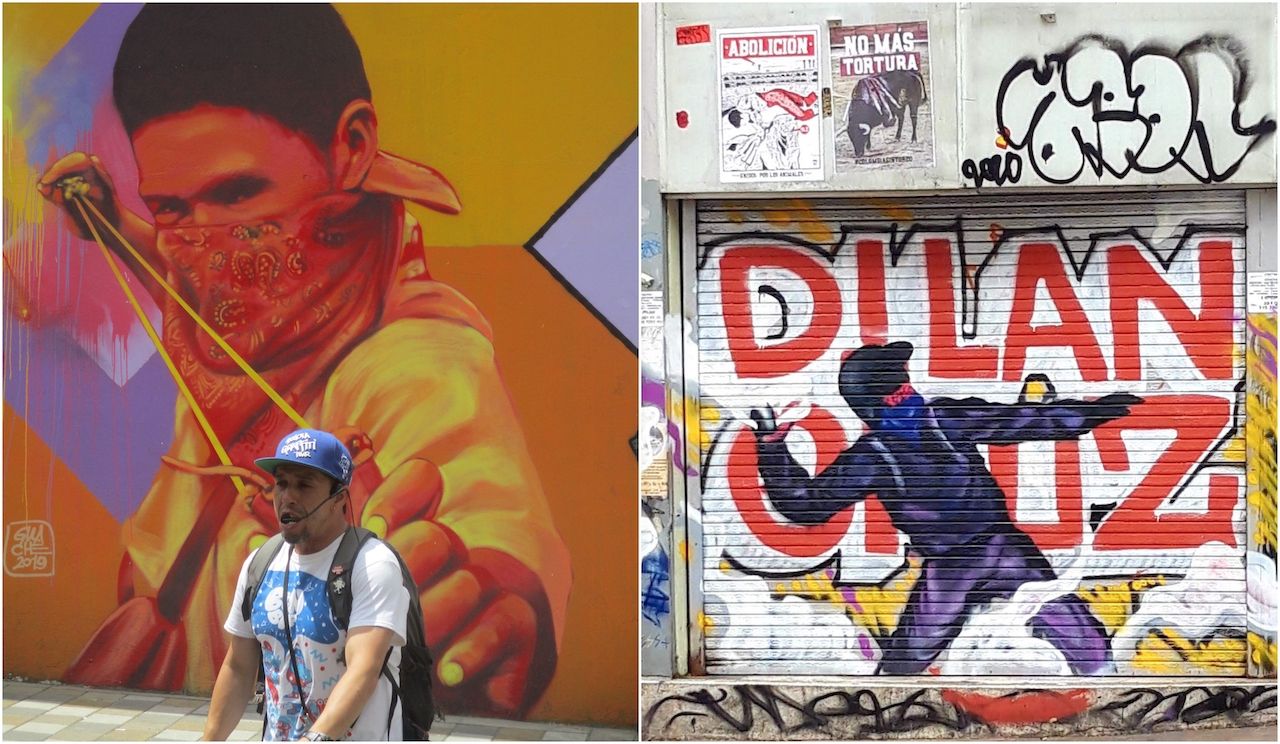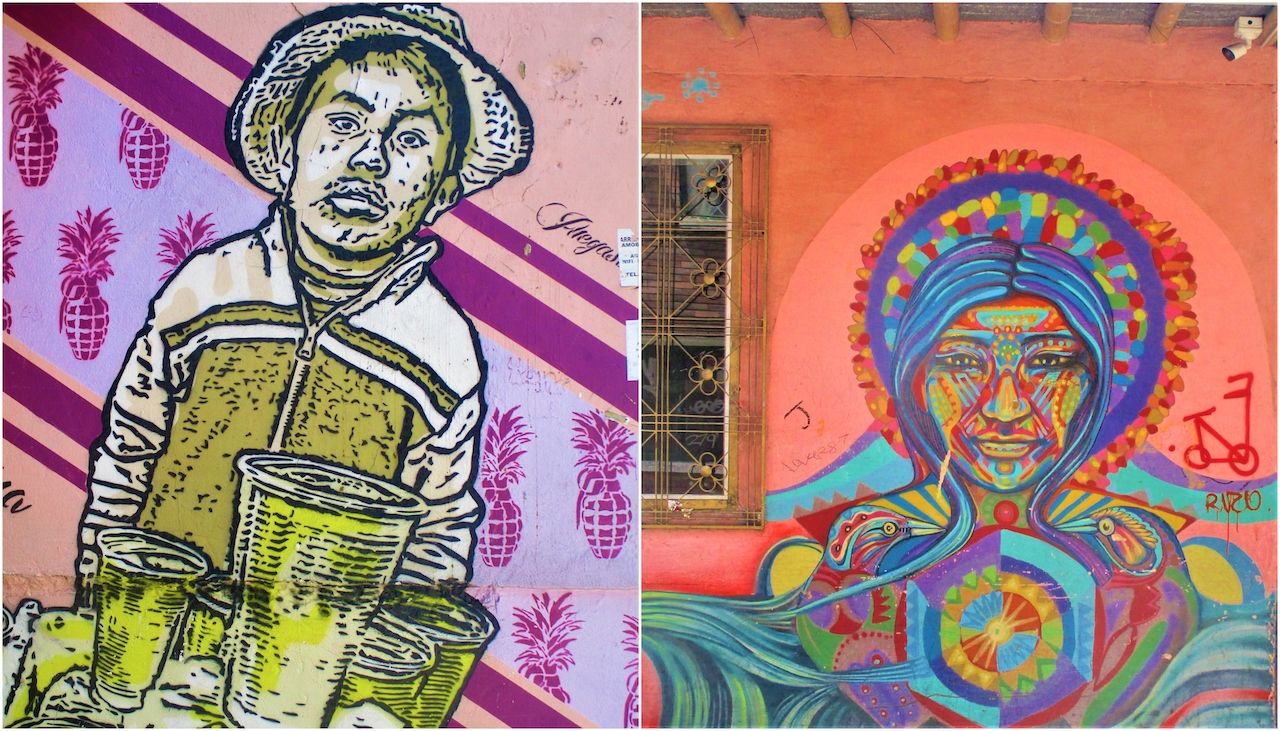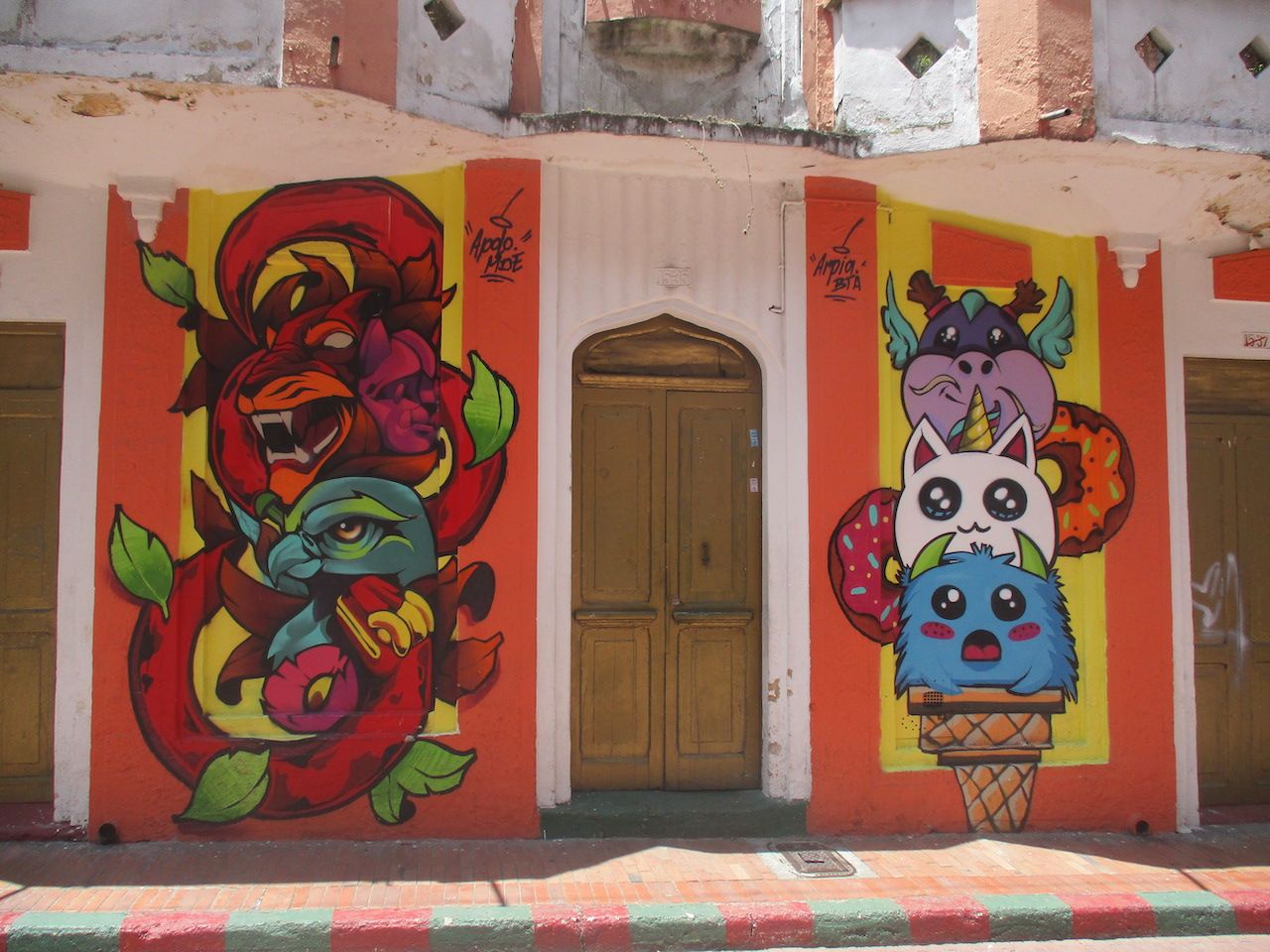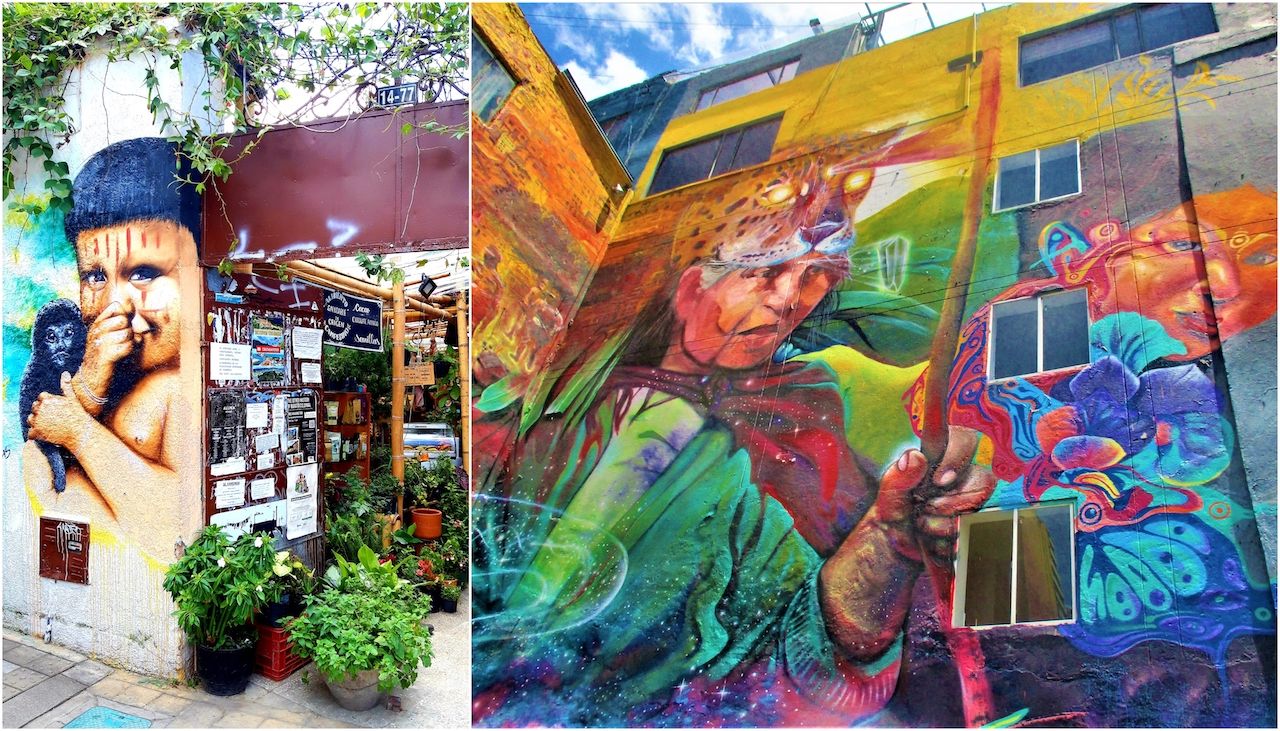Nuestro Norte Es El Sur by Guache Street Art. La Candelaria Bogotãƒâ¡ D.c. Colombia
Republic of colombia has emerged from its darkest days of gang warfare and violent crime to become a compelling destination for travelers. And Bogotá's street art scene is one of the major crowd drivers to the nation.
The Colombian ceremonious state of war began to de-escalate at the beginning of this century and in 2016, a complete ceasefire was announced. Following the ceasefire, tourists flocked to the country which had once been deemed too dangerous to travel in.
Today, one of the capital city'due south most captivating aspects for travelers is its colorful, chaotic, and prolific street art. Bogotá's street art scene flourished in the 90s fuelled by the effect of the civil war along with the activities of Pablo Escobar's notorious drug cartel. During that time, Colombia became non simply a dangerous land, but besides i that suffered from widespread poverty. The situation was reflected in the street art which sprung up everywhere. These days, however, in addition to art work representing political struggles, at that place are besides plenty of whimsical and entertaining creations on the streets of Bogotá.
Bogotá Graffiti Tour

Photo: Writer
Ane of the best ways to experience Bogotá'south street fine art is to sign upwardly for the Bogotá Graffiti Tour. The complimentary tour, which has been running since 2011, was founded by Australian street artist CRISP, who specializes in socio-political art, stencil work, and street sculptures. The balance of the team, Jay, Monica, Ana, Jeff and Carlos are a grouping of artists, creatives, and Bogotá experts who are passionate almost Bogotá's street fine art scene. Any donations received are used to reinvest in the community and create projects in Bogotá and all over Colombia.
The tour kicks off daily at Parque de los Periodistas, situated in the historical district of La Candelaria, at 10:00 AM and 2.00 PM. These tours are in English, simply private tours are offered in Spanish, French, and Dutch. As well every bit taking in some of the surface area's most significant work, the guides dive deep into the history, politics, and artists that take contributed towards making the city's street fine art scene what it is today. A recent addition to the tour is a stop at the corner where teenager, Dilan Cruz, was hit by a law projectile during the anti-government demonstrations at the end of 2019. He consequently died in infirmary. A piece of street art has been dedicated to him at the spot where he was hit.
The murder of Diego Felipe Becerra
Street fine art in Bogotá has only been decriminalized in recent years following a tragic incident that occurred in 2011. Diego Felipe Becerra, a xvi-twelvemonth-old street artist, was killed by police while spray painting a wall in the neighborhood of Aguas Calientes. Diego was creating his signature motif of Felix the Cat when the police arrived. He tried to run away from the scene and was shot. The Bogotá Police attempted to cover upwards the shooting and falsely claimed that Diego had been involved in an armed robbery. Protests took place across the urban center, attended by street artists and their supporters, and Diego subsequently became a posthumous hero of Bogotá's street art community.
Justin Bieber
Every bit foreign as it seems, Justin Bieber likewise inadvertently contributed to the acceptance of street art in Bogotá. While he was in the city for a gig in 2013, he was escorted by police, at his asking, to a wall with the intention of creating his own masterpiece. At that place, he proceeded to spray paint an paradigm of the Canadian flag, replacing the maple leafage with a marijuana leafage. Anger erupted amongst the street art community, who for many years, had been forced to paint nether the cover of darkness. The pop star was immune, fifty-fifty encouraged, to spray pigment the wall when one of their own had been murdered for doing the same thing. The following 24-hour interval, hundreds of artists arrived at the scene to pigment over Beiber's flag.
Justin Bieber's street fine art escapade, together with Diego Becerra's tragic death, led to the credence of street art by the authorities. Nowadays, street fine art is allowed anywhere as long as permission is given by the property owner. The authorities has even commissioned art across the city.
The artists

Photo: Author
Both Colombian and international artists contribute to Bogotá's street art scene. Stinkfish, whose work is noted for its freestyle spray strokes and confront stencils, is known equally one of the state'southward top artists. Guache is another prominent artist and is a member of the Bogotá Street Fine art Collective. He creates colorful pieces relating to indigenous people and wild fauna. Carlos Trilleras is known for his detailed fantasy figures which adorn many buildings in La Candelaria. Other prominent artists include Rodez, Pez, and DjLu. One of the few female artists is Bastardilla, whose piece of work focuses on violence, poverty, and feminism. Many of the local artists also belong to street fine art collectives such as Animal Pulverisation Crew or MAL.
Where to see the all-time of Bogotá'south street art

Photo: Writer
Avenida El Dorado
Upon arriving at El Dorado, Bogotá'southward international airport, the city's passion for street art is immediately apparent. A profusion of street art and graffiti lines the main drag of Avenida El Dorado, which stretches from the airport to downtown. In fact, some of the largest and most striking pieces in the city can exist seen here. On Sundays, traffic is banned and cyclists and pedestrians have to the street, giving the surface area a arctic vibe and making it a perfect time to view the vicinity's street art.
La Candelaria

Photo: Author
La Candelaria is a popular location for upkeep travelers and backpackers to stay and it also has the highest concentration of street art in the city. It is particularly abundant effectually Parque de los Periodistas, which also happens to exist the starting point for the Bogotá Graffiti Tours. The area has an edgy vibe, but it is condom to stroll around during the day and the hilly streets of La Candelaria are home to most of the city's finest colonial compages. Colorful creations can be seen everywhere from hotels and storefronts to doorways and basketball game courts. In fact, the owners of many of the buildings actually commission artists to decorate their properties.
Distrito Graffiti
The newest hotspot for street art is the industrial area of Puente Arande, otherwise known as Distrito Graffiti. Deputed by the Colombian Secretary of Culture, the aim of the project is to promote the responsible do of street fine art and self expression. Additionally, the hope is that the project will assistance change the misconception of street art as vandalism. The area covers two blocks of brick warehouses which take been painted by over 1 hundred street artists from all over the world. It's an impressive sight which has brought vibrancy and purpose to a previously down-at-heel area.
More like this
murray-priorcabou1994.blogspot.com
Source: https://matadornetwork.com/read/bogotas-street-art/